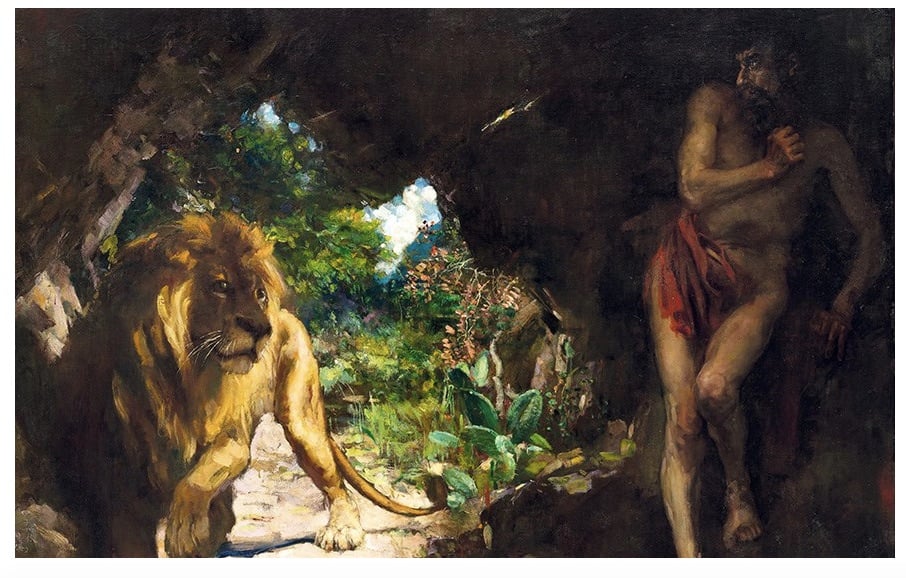
Was it a shift in tastes or an overly aggressive asking price that caused the star lot of a major Christie’s Hong Kong evening sale to fail earlier this week?
On the same night that robust prices were recorded for blue-chip stars Jean-Michel Basquiat, Zao Wou-ki, and Sanyu, no one took home Xu Beihong’s Slave and Lion (1924), the subject of a standalone single-lot sale immediately following the house’s $204 million auction of 20th- and 21st-century art. The work, which carried a hefty price tag of $45 million to $58 million (HK$350 million to $HK450 million), depicts the tale of Androcles and the lion, in which a slave who takes refuge in a cave shows kindness to a lion by extracting a thorn from its paw.
Xu is sometimes referred to as the father of modern Chinese painting. He lived in Europe between 1917 and 1926 and studied at the École Nationale Supérieure des Beaux-Arts in Paris.
In the preview for the sale, Christie’s described the work as a “ground-breaking example of the artist’s thematic creations, and signifies a watershed moment in modern Chinese art history.” In an accompanying essay and video, Christie’s experts expounded on the realist artist’s expert use of chiaroscuro. But none of this marketing, nor the work’s display in Beijing, Shanghai, and Hong Kong this spring was enough to drive its sale.
So what happened? For starters, the asking price may have simply been too high. The work was last sold at auction in 2006, also at Christie’s Hong Kong, for a then-record $6.9 million. If it had reached its $45 million low estimate this week, it would have represented a more than six-fold increase over the course of a decade and a half.
The 2006 seller was a private Singaporean collection, according to Barron’s, while the consignor this time around is not known. (Christie’s does not comment on the identity of consignors or buyers.)
Image courtesy Christie’s.
Still, the current auction record for the artist suggests that a $40 million price is not unheard of. In 2011, the artist’s ink-and-color work on paper Cultivation on the Peaceful Land (1951), sold for $41.9 million at Poly auction. The following year, an oil painting, Jiu Fanggao (1931), sold for $16 million at an auction in Shanghai, according to the Artnet Price Database.
“I do not get it,” said Hong Kong dealer Pascal de Sarthe when asked why he thought the work did not sell. “Slave and Lion is a seminal masterpiece of historical significance in modern Chinese art history.” Perhaps the price tag was too high, de Sarthe added, “but most likely we should take into consideration that taste is changing and buyers at that level of price would rather purchase post-war and contemporary art.”
“We are privileged to have had the honor of presenting [this] historical masterpiece,” a Christie’s representative in Hong Kong told Artnet News. “Although the monumental painting received considerable interest, it did not translate into a sale this evening. We have received post-sale inquiries and will explore further opportunities.” The auction house declined to comment about why the work may have failed to sell.
But all hope may not be lost for the Xu work and others like it. “These masterpieces by Chinese artists of historical significance will most likely be sought after in the near future,” said de Sarthe, “when the new Chinese museums will need to purchase them to fill the gap in their collections.”